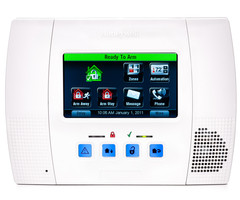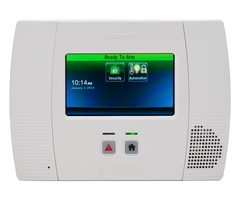How Does RF Supervision Work On a Honeywell LYNX Touch System?
RF supervision on a Honeywell LYNX Touch System works by requiring all wireless sensors to check-in at least once every 12 hours. If the wireless sensors are powered on and communicating properly (i.e. within range), then you should not experience any RF supervision loss conditions.

The only wireless sensors that a Honeywell LYNX Touch System can support are those from the Honeywell 5800 Series. A LYNX Touch System must receive a check-in signal from these sensors at least once every 12 hours, or else an RF supervision loss condition will occur. These sensors are designed to send out check-in signals every 70 to 90 minutes on a randomized basis. In theory, a LYNX Touch System should only experience a loss of RF supervision for a zone if there is something wrong with that sensor, or if that sensor has lost power. As long as the panel receives at least one (1) check-in signal from each programmed sensor no RF supervision loss will occur.
RF supervision loss occurs either when a sensor is unable to send out a check-in signal, or when the panel is unable to receive a check-in signal from a sensor. The most common reason why a sensor would be unable to send out a check-in signal is because the sensor is powered down. This is usually the result of the sensor being powered down due to a dead battery. The most common reason why a LYNX Touch Panel would not be able to receive a check-in signal from a sensor is because the sensor is out of RF signal range. The range for a 5800 Series Sensor is about 200 feet in open air. If you take the sensor out of range, then it is likely that its signals will be unable to reach the panel. Remember that thick walls and large metal obstacles can disrupt transmissions and reduce range.
In the event that you get an RF supervision loss condition for a sensor, you must correct the problem and perform a double disarm to clear the condition. Start by making sure the sensor is properly powered on and within wireless range of the panel (no more than 200 feet in open air). Wait at least 90 minutes to give the sensor a chance to transmit a check-in signal to the panel. It is also helpful to try and transmit a signal to the panel. This can be done by faulting and restoring the sensor (intrusion sensors) or by pressing its test button (life-safety sensors). Remember to always put your system on test mode before pressing the test button on a life-safety sensor!
From there, you can perform a disarm by pressing the picture of the house on the front of the panel (or the unlock button on older LYNX Touch Panels) and entering the Master Code. You can do this even if the panel is in a disarmed state. The Master Code is the code that you should use for most arming and disarming. Once you have entered the Master Code, repeat the process by pressing the picture of the house (or the unlock button) and entering the Master Code again. This is a double disarm. If the panel received a check-in signal from the sensor earlier, then the trouble should clear.
Did you find this answer useful?
We offer alarm monitoring as low as $10 / month
Click Here to Learn MoreRelated Products


- Answered
